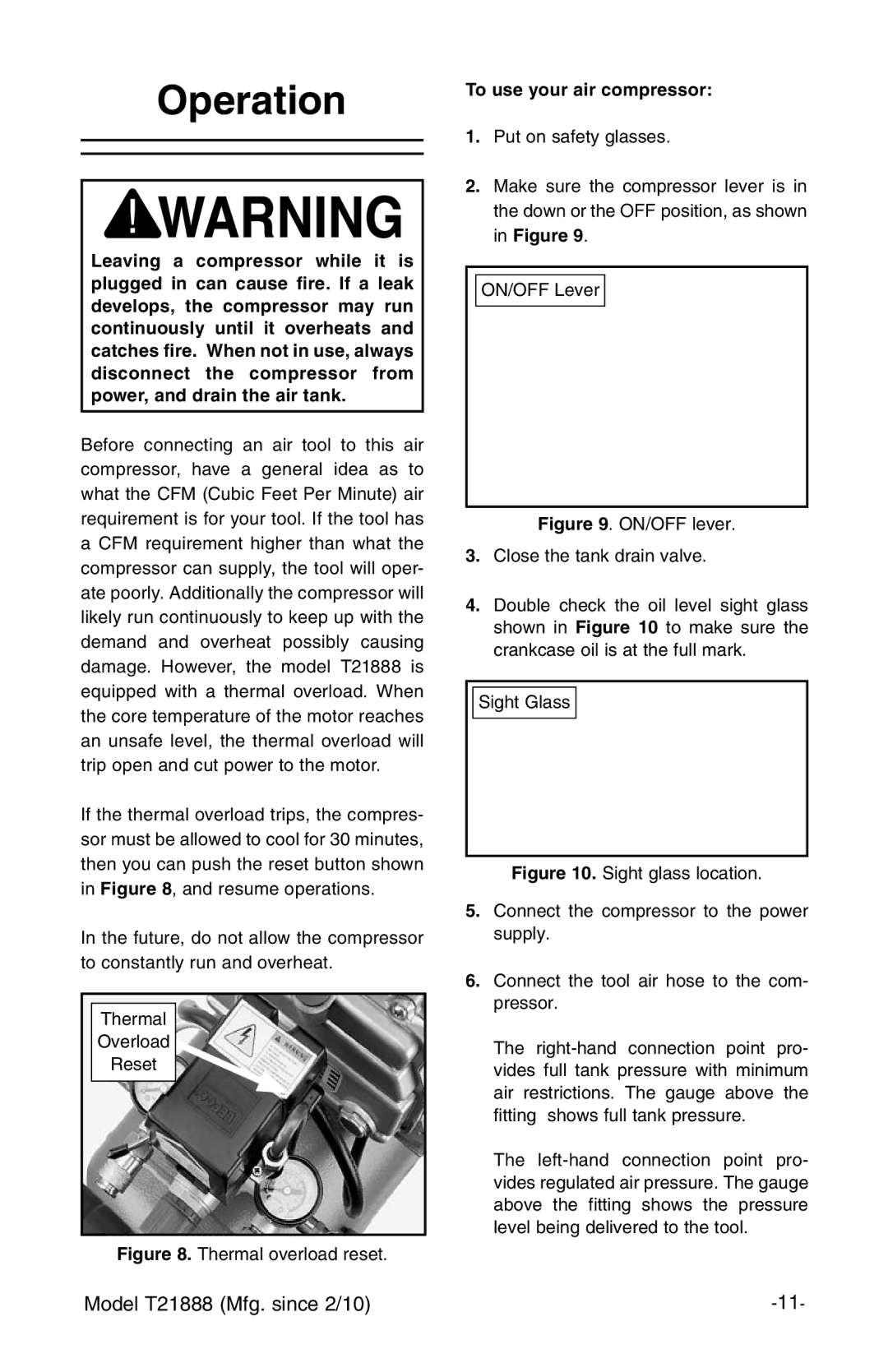
Operation
Leaving a compressor while it is plugged in can cause fire. If a leak develops, the compressor may run continuously until it overheats and catches fire. When not in use, always disconnect the compressor from power, and drain the air tank.
Before connecting an air tool to this air compressor, have a general idea as to what the CFM (Cubic Feet Per Minute) air requirement is for your tool. If the tool has a CFM requirement higher than what the compressor can supply, the tool will oper- ate poorly. Additionally the compressor will likely run continuously to keep up with the demand and overheat possibly causing damage. However, the model T21888 is equipped with a thermal overload. When the core temperature of the motor reaches an unsafe level, the thermal overload will trip open and cut power to the motor.
If the thermal overload trips, the compres- sor must be allowed to cool for 30 minutes, then you can push the reset button shown in Figure 8, and resume operations.
In the future, do not allow the compressor to constantly run and overheat.
Thermal
Overload
Reset
Figure 8. Thermal overload reset.
To use your air compressor:
1.Put on safety glasses.
2.Make sure the compressor lever is in the down or the OFF position, as shown in Figure 9.
ON/OFF Lever
Figure 9. ON/OFF lever.
3.Close the tank drain valve.
4.Double check the oil level sight glass shown in Figure 10 to make sure the crankcase oil is at the full mark.
Sight Glass
Figure 10. Sight glass location.
5.Connect the compressor to the power supply.
6.Connect the tool air hose to the com- pressor.
The right-hand connection point pro- vides full tank pressure with minimum air restrictions. The gauge above the fitting shows full tank pressure.
The
Model T21888 (Mfg. since 2/10) |
